Fix: “The File is Too Large For The Destination File System” Error on Windows
Many users reported to encounter the file is too large for the destination file issue when copying a file (even with files having a size of some KBs). The issue is not limited to a particular file type (like PDF) or file system (like FAT32). Also, the problem has occurred while copying to an external drive, to a network driver, and even in some cases, when copying to a local drive. Moreover, the issue is also reported to happen when creating a new folder, renaming a file/folder, or deleting a file/directory. Also, some users faced the issue when creating a bootable Windows USB.

The following can mainly cause the file is too large for the destination file system error:
- FAT32 File System: If the problematic drive is formatted as FAT32, then the 4GB (maximum file size limitation of the FAT32 file system) could be the reason for the issue under discussion if the file in question has a size of more than 4GB.
- Corrupt or Incompatible Storage Driver of the System: If the storage driver of the system is corrupt or incompatible with other system modules, then that can cause the file is too large issue.
- Interference from a System Utility/Driver or Service: If a system utility/driver or service is hindering the copying mechanism of the system, then that can cause the issue at hand.
- Hardware Issues of the Drive: If the problematic drive is contained in a case, then the case’s incompatibility with the storage capacity of the drive can create the destination file system issue i.e. if the drive’s capacity is 4TB but the case can only handle 2TB and when the data on the drive goes over 2TB, then that may result in the file is too large problem.
Convert the FAT32 File System of the Problematic Drive to NTFS
If the targeted drive is formatted as FAT32, then the 4GB limit of the file size could be a reason for the file is too large issue at hand if the file’s size is larger than 4GB. Here, a user may fix the file too large for the destination file system without formatting by converting the problematic drive to NTFS. But before going on that route, make sure the maximum file name length or path length is not causing the issue at hand.
Warning:
Proceed at your own risk as converting a drive to NTFS is usually a safe process but can cause data loss. Also, a non-Windows system (like a Mac) may show the device as read-only (although, there are third-party tools that may take care of that).
- Firstly, create a backup of the essential data.
- Then, click Windows, search for CMD, right-click on Command Prompt, and select Run as Administrator.

Open Command Prompt as Administrator - Now execute the following (replace <drive> with the letter of the problematic drive like D):
convert <drive> /fs:ntfs /nosecurity
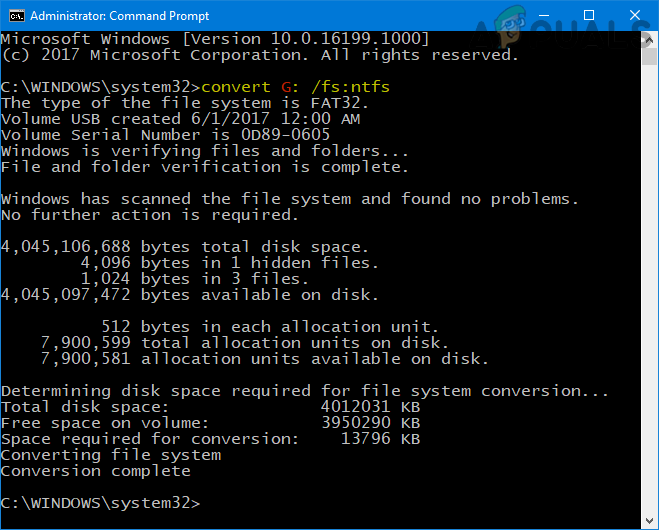
Convert FAT32 to NTFS Through the Command Prompt - Then wait till the conversion is complete and afterward, check if the file is too large for the destination problem is solved.
If the conversion fails, perform a ChkDsk scan and afterward, check if the drive file system can be converted to NTFS.
Format the Problematic Drive as NTFS
If converting the drive is not an option, then a user may fix a file that is too large for the destination file system by formatting the problematic drive as NTFS. Before proceeding, back up the essential contents of the problematic drive.
- Right-click Windows and select File Explorer.

Open File Explorer from the Quick Access Menu in Windows 11 - Now, in the left pane, select This PC, and in the right pane, right-click on the problematic drive.
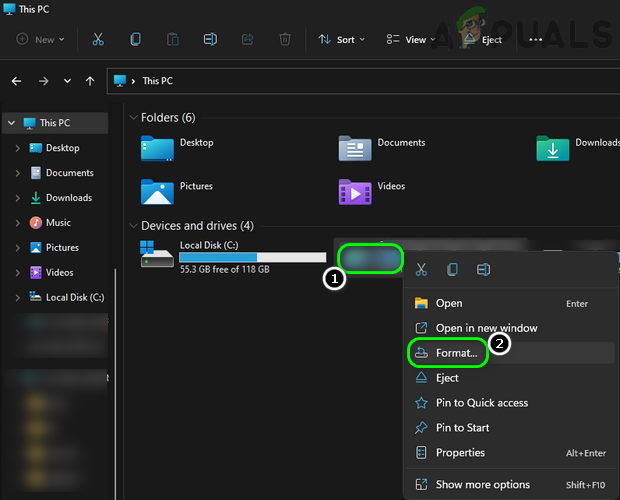
Select Format in the Drive’s Context Menu - Then, select Format and set the File System dropdown to NTFS. If the drive is going to be used with a Linux machine, you may prefer exFat.
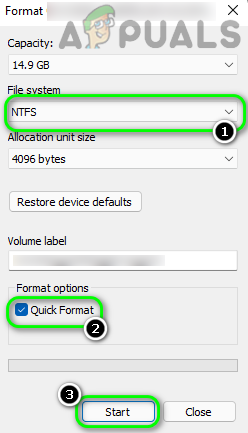
Format the Drive as NTFS - Now, checkmark Quick Format and click on Start.
- Wait till the format operation is complete and afterward, check if the file is too large problem is cleared.
- If it fails, repeat the above steps but set the dropdown of the Allocation Unit Size to 16kilobytes and check if the destination file error is cleared.
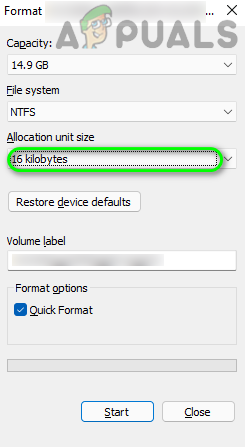
Change the Allocation Unit Size to 16 Kilobytes - If the drive fails to format as NTFS, then right-click Windows and select Disk Management.
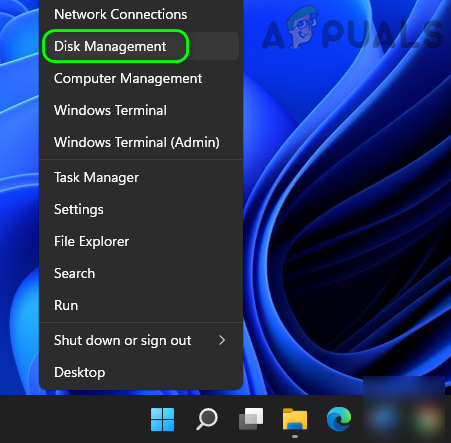
Open Disk Management in the Quick Access Menu of Windows 11 - Now, in the disks section, right-click on the problematic disk and select Properties.

Open Properties of the Disk in the System’s Disk Management - Then, head to the Policies tab and select the radio button of Better Performance.
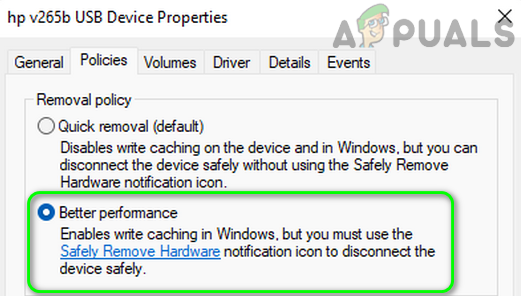
Set the USB Device to Use the Better Performance Mode - Now click on OK and repeat steps 1 to 5 to check if the file is too large problem is cleared.
If the issue is occurring when copying a file to a network drive that is formatted in a different file system (like ReFS) but cannot be converted, then check if copying the file to a local drive with the same file system (like ReFS) of the network share and then moving it to the network drive solves the problem. If that is not an option, check if using the network share’s IP address (like \\192.168.1.100\sharedirectoryname) solves the problem. Keep in mind if the issue is occurring with an online service (like Citrix), then check with the service support for a server-side issue.
Revert or Reinstall the Storage Driver of the Disk
If the storage driver of the drive is incompatible or corrupt, then that may cause the file is too large error at hand. In such a case, reverting or reinstalling the storage driver of the drive may solve the problem.
- Right-click on Windows and select Device Manager.

Open the Device Manager in the Quick Access Menu of the Windows 11 - Now, expand the IDE ATA/ATAPI Controllers and right-click on the Standard SATA AHCI Controller.

Open Properties of the Standard SATA AHCI Controller in the System’s Device Manager - Then select Properties and head to the Driver tab.
- Now, click on the Roll Back Driver (if the option is available) and follow the prompts on the screen to roll back the SATA driver.

Roll Back the SATA Driver - Afterward, restart your system and upon restart, check if the destination system file error is cleared.
- If not, open the Driver tab of the SATA driver in the system’s Device Manager and click on Uninstall Device.
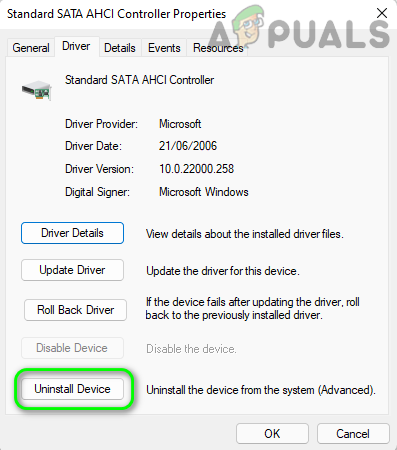
Uninstall the SATA Driver in the Device Manager - Then checkmark the option of Delete the Driver Software of This Device (if shown) and click on Uninstall.
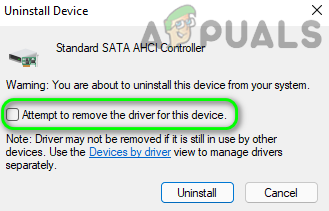
Delete the Device Driver of SATA and Uninstall it - Now, wait till the driver is uninstalled and then restart your system.
- Upon restart, check if the file system issue at hand is cleared.
- If the issue persists, then check if reverting or reinstalling the disk’s driver in the Disk Drives tab of the system’s Device Manager solves the problem.
Use the Safe Mode of the System
If a 3rd party utility or a system’s driver/service is hindering the copying operation of the system, then that can cause the file is too large problem (especially, when copying, moving or deleting the file). Here, using the system’s safe mode may let a user solve the problem.
- Firstly, boot your system into Safe Mode.
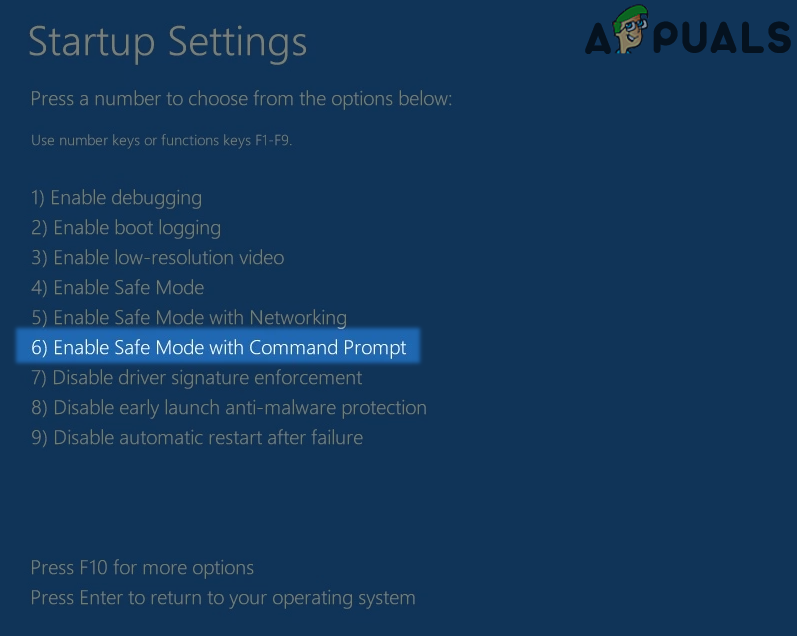
Boot Your System into the Safe Mode With Networking - Now try the operation that was causing the issue (like renaming a folder) and check if the file is too large problem of the system is cleared.
If the issue is occurring with an external drive, then check if running a ChkDsk scan on the problematic drive in the safe mode solves the problem. Also, if the issue is occurring with a particular application’s file (like PST), then check if using the export feature of that application (like Adobe Bridge) solves the problem. If the problem is happening when downloading through a browser, check if using another browser clears the issue.
Split the File into Smaller Chunks
There can be cases, where a user might need to use a FAT32 file system on the external drive as the user is bound to use it on the device that only supports FAT32 (like a PS3). In this scenario, splitting the file into smaller chunks may let a user bypass the FAT32 4GB limit. For illustration, we will discuss the process to split a file by using WinRAR.
- Download and install WinRAR.
- Now, right-click on the problematic file/folder and select Add to Archive.
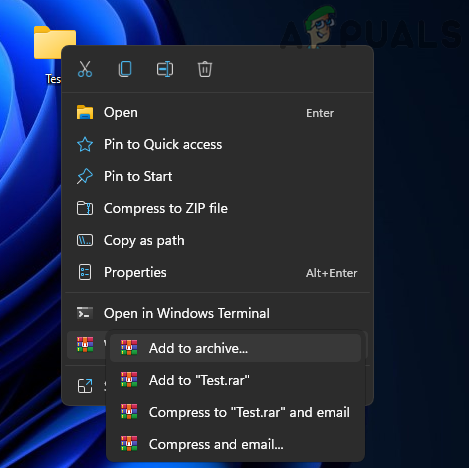
Add the Problematic File or Folder to an Archive - Then, near the bottom left of the window, set the Split to Volume box to an appropriate value (like 2GB).
- Now click on OK and wait till the split volumes are created.
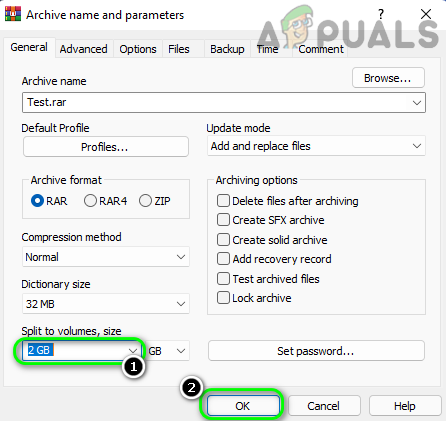
Set Split to Volume Size to 2GB for the Archive - Then copy these volumes to the problematic drive and on the required device, merge back the volumes to check if the issue is resolved.
Keep in mind this may not work for every user and the user may find a utility compatible with the required device to copy a large file (like a 5GB file) to FAT32. Some other utilities or commands are:
- FFMPEG
- NSP Splitty
- MKVMerge
- FileZilla (supports copying of large files to a FAT32 drive)
- PS3 ISO Tools
- Split4G
- IRISMan/Multiman/Webman
If the issue is occurring when copying the Install.wim file while creating a Windows bootable USB, then a user may split the Install.wim or convert it to Install. swm or Install.esd by using the following DISM command (replace the drive’s like F or C with the actual values)
Dism /Split-Image /ImageFile:F:\sources\install.wim /SWMFile:C:\users\USERNAME\install.swm /FileSize:3072
Also, in the case of a bootable drive issue, a user may create two partitions in the drive, one FAT32 (bootable) and other NTFS (the same technique used by Rufus to create a bootable USB) to solve the problem.
If none of the above worked and issue is occurring with an external drive, then make sure the drive’s case is compatible with the storage capacity of the drive i.e., for an external drive with the capacity of 3TB, a case may only be able to handle 2TB and when the drive reaches the 2TB capacity, then it can throw the above error although, there is still 1TB space available on the drive. If that is not the case, then check if the external drive in use is a genuine one and shows the real file system/size as there are plenty of fake/counterfeit devices that may show the file is too large error (there are tools like HWtestw that can check this).




